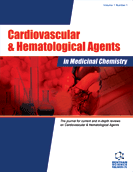Abstract
Bivalirudin, a direct thrombin inhibitor, is an anticoagulant commonly used in invasive cardiology procedures. It has evolved from relative obscurity, as an anticoagulation option only utilized in rare instances of allergy or resistance to heparin products, to the now preferred antithrombotic anticoagulant in the cardiac catheterization laboratory. On the way to displacing unfractionated heparin as the preferred anticoagulant for percutaneous coronary intervention, multiple studies comparing bivalirudin with heparin have consistently shown equivalent ischemic efficacy endpoints (i.e. cardiovascular death, myocardial infarction, etc.), with significant reductions in bleeding. Bleeding has been directly linked to worse hospital outcomes in cardiac patient’s undergoing invasive coronary artery revascularization procedures. More recent bivalirudin studies now demonstrate reductions in mortality, which has led to a paradigm shift to bivalirudin as the anticoagulant choice both in elective and emergent coronary procedures. We present the major studies that have brought bivalirudin to the forefront of coronary artery disease, specifically coronary interventional procedures.
Keywords: Acute coronary syndrome, anticoagulant, bivalirudin, coronary artery disease, myocardial infarction, percutaneous coronary intervention




























